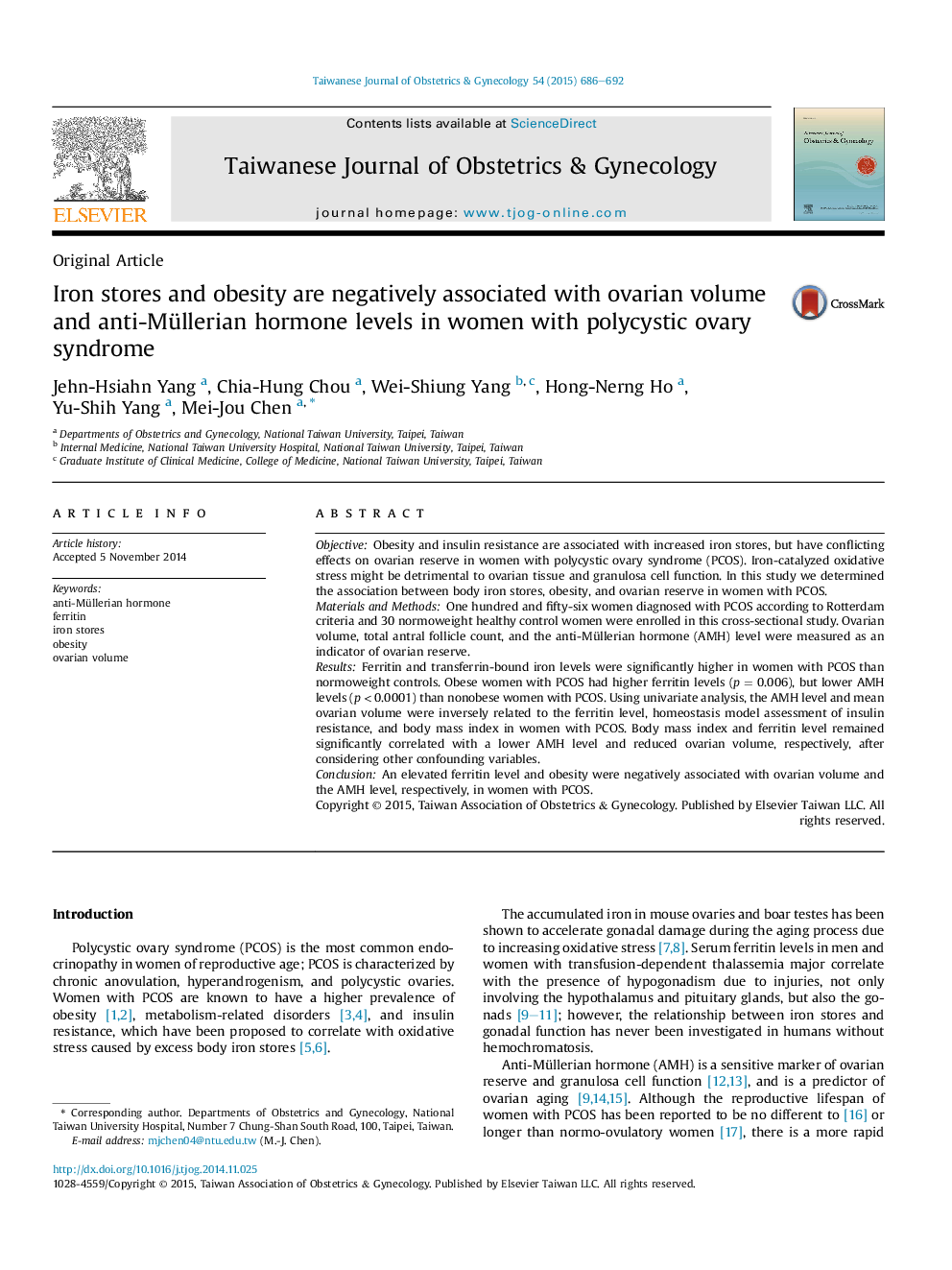| Article ID | Journal | Published Year | Pages | File Type |
|---|---|---|---|---|
| 3975238 | Taiwanese Journal of Obstetrics and Gynecology | 2015 | 7 Pages |
ObjectiveObesity and insulin resistance are associated with increased iron stores, but have conflicting effects on ovarian reserve in women with polycystic ovary syndrome (PCOS). Iron-catalyzed oxidative stress might be detrimental to ovarian tissue and granulosa cell function. In this study we determined the association between body iron stores, obesity, and ovarian reserve in women with PCOS.Materials and MethodsOne hundred and fifty-six women diagnosed with PCOS according to Rotterdam criteria and 30 normoweight healthy control women were enrolled in this cross-sectional study. Ovarian volume, total antral follicle count, and the anti-Müllerian hormone (AMH) level were measured as an indicator of ovarian reserve.ResultsFerritin and transferrin-bound iron levels were significantly higher in women with PCOS than normoweight controls. Obese women with PCOS had higher ferritin levels (p = 0.006), but lower AMH levels (p < 0.0001) than nonobese women with PCOS. Using univariate analysis, the AMH level and mean ovarian volume were inversely related to the ferritin level, homeostasis model assessment of insulin resistance, and body mass index in women with PCOS. Body mass index and ferritin level remained significantly correlated with a lower AMH level and reduced ovarian volume, respectively, after considering other confounding variables.ConclusionAn elevated ferritin level and obesity were negatively associated with ovarian volume and the AMH level, respectively, in women with PCOS.
